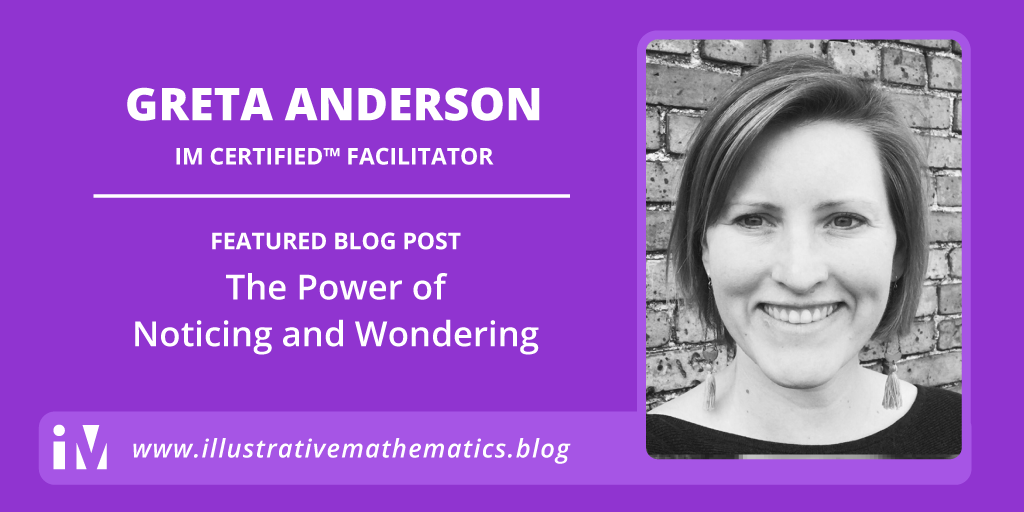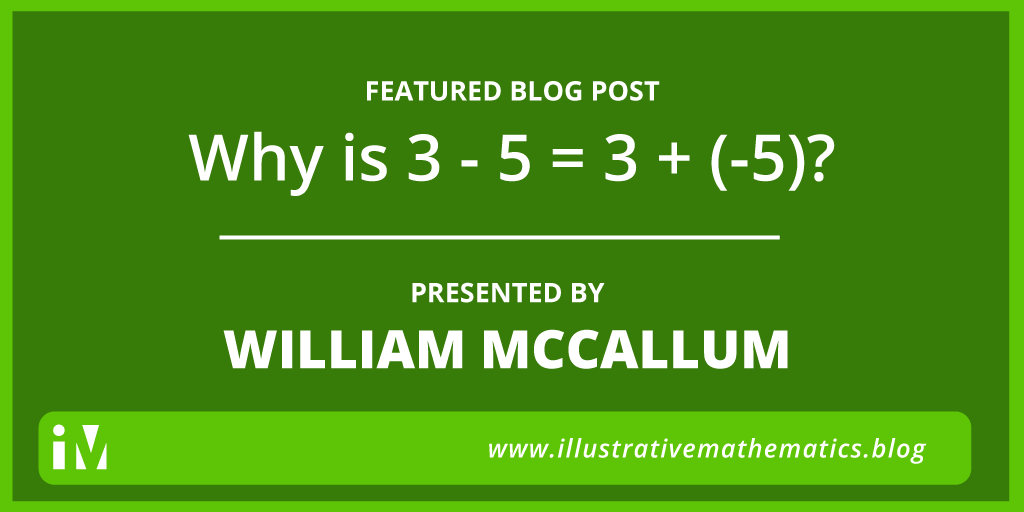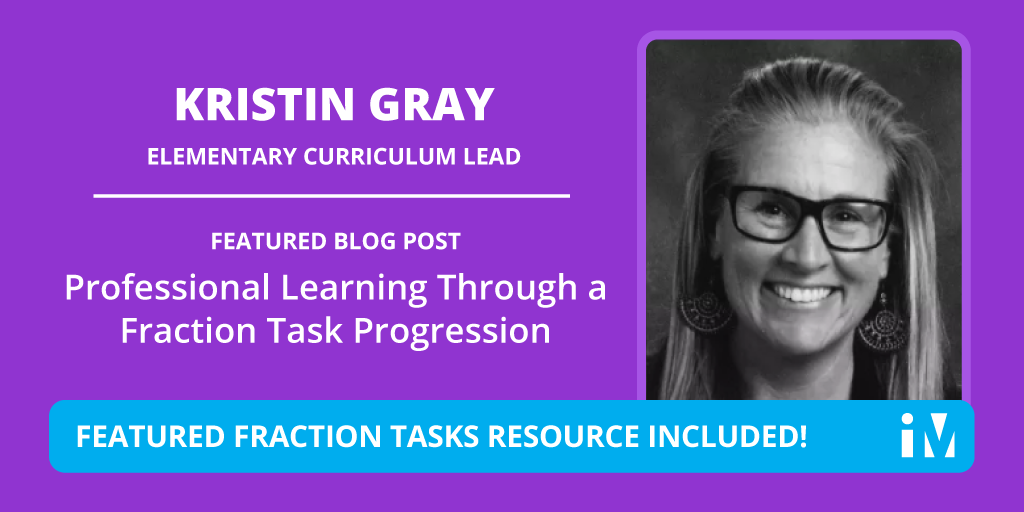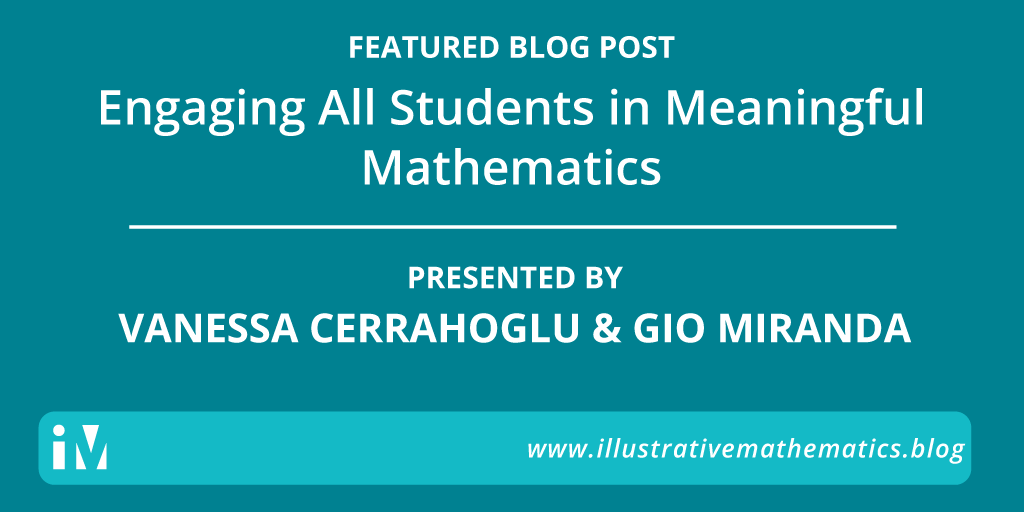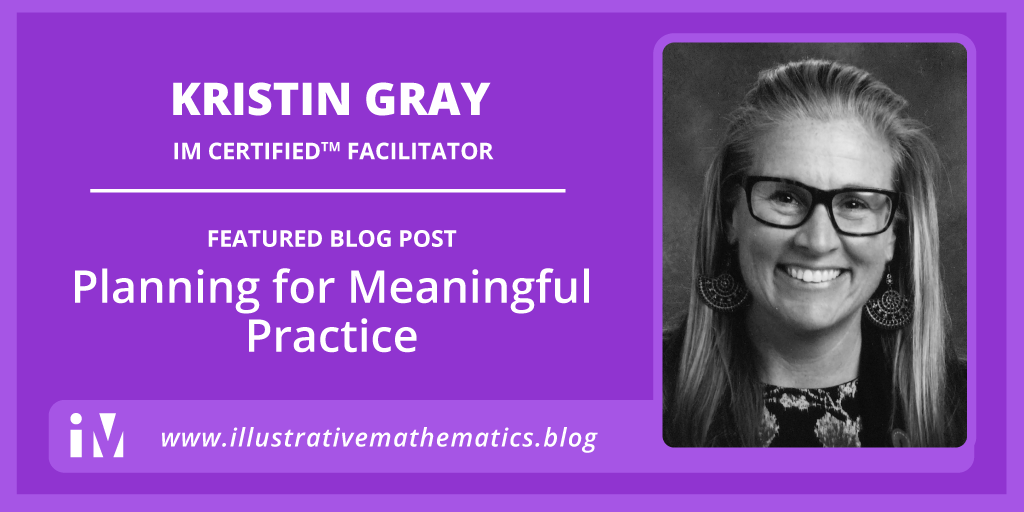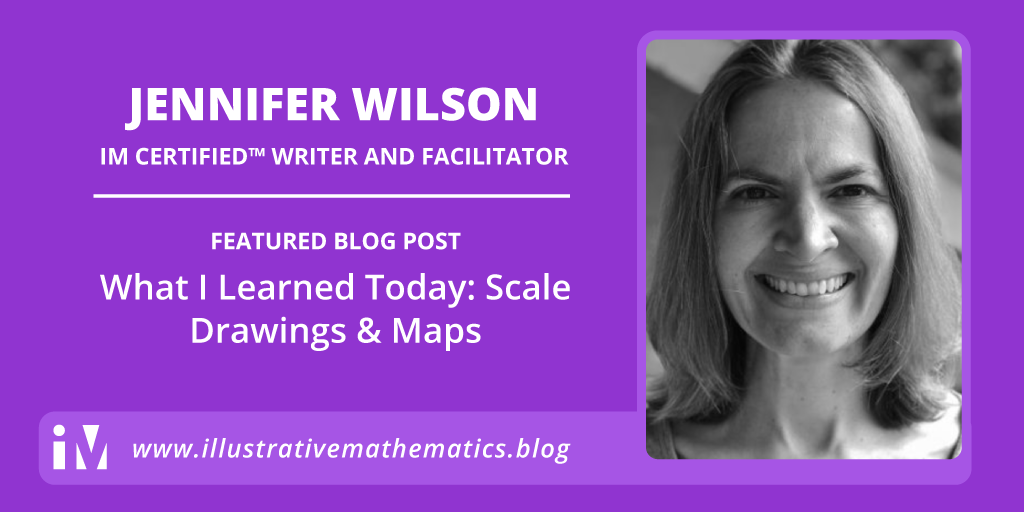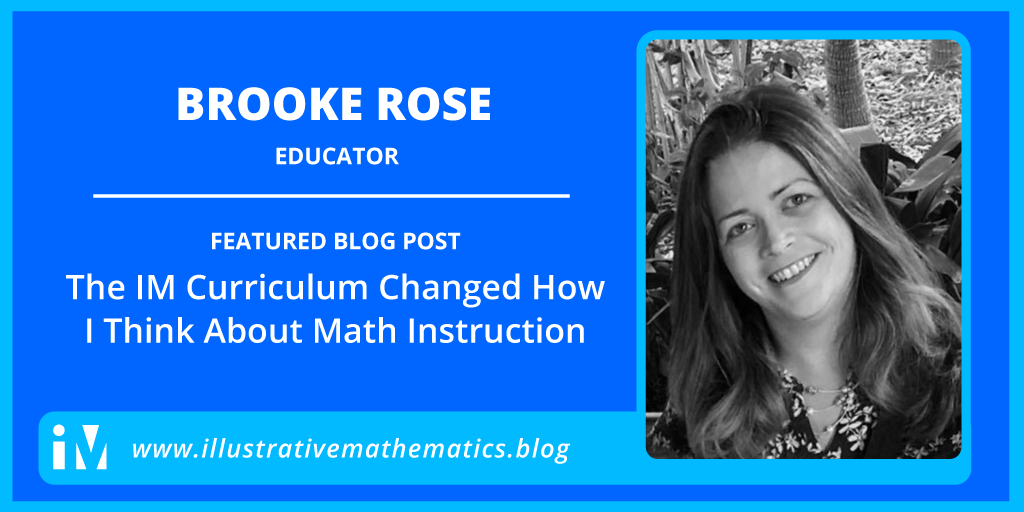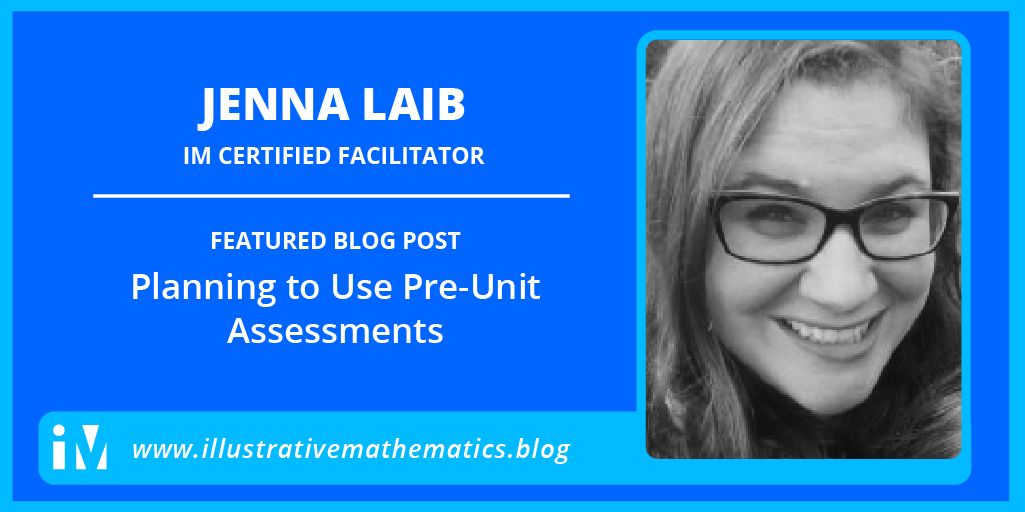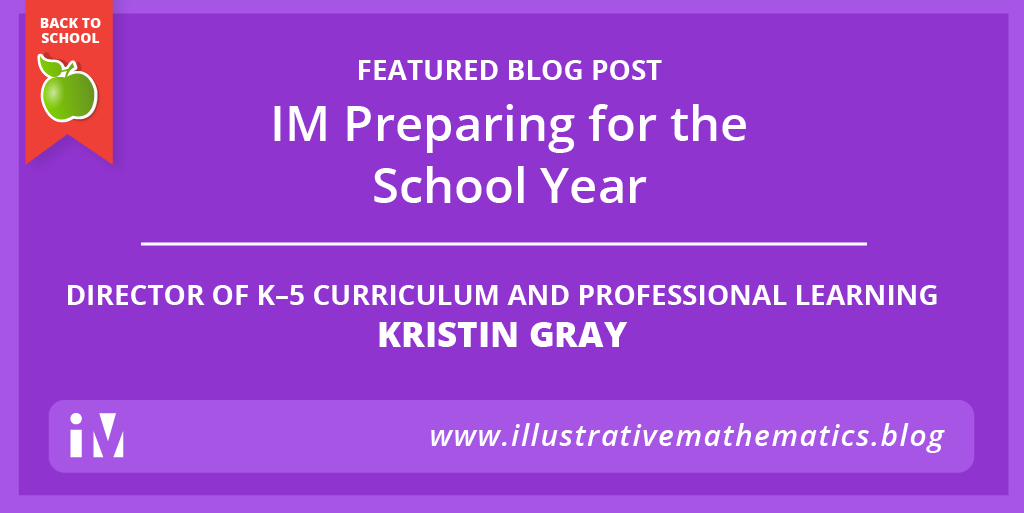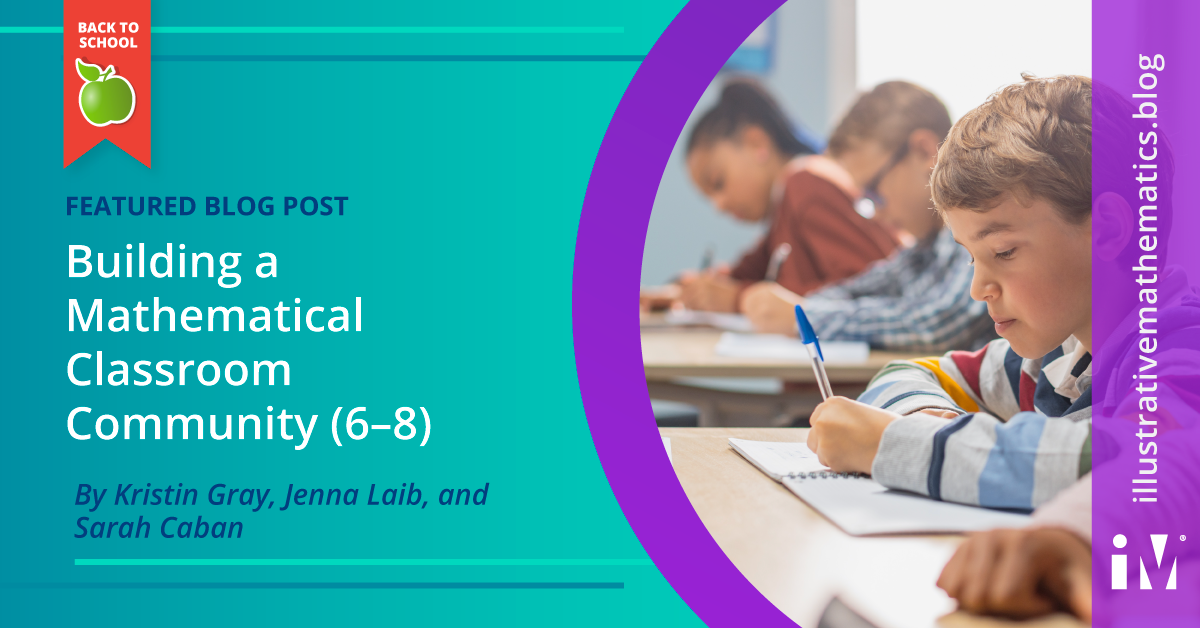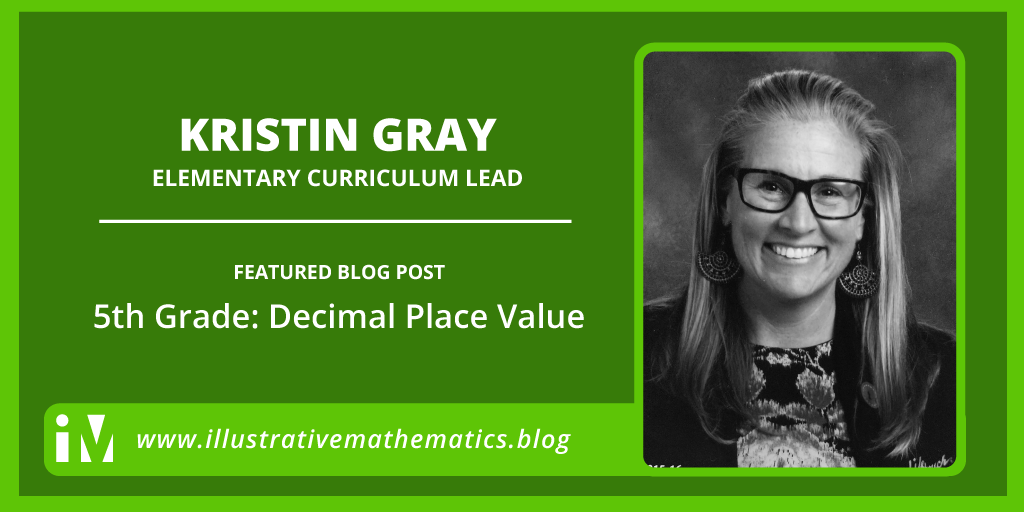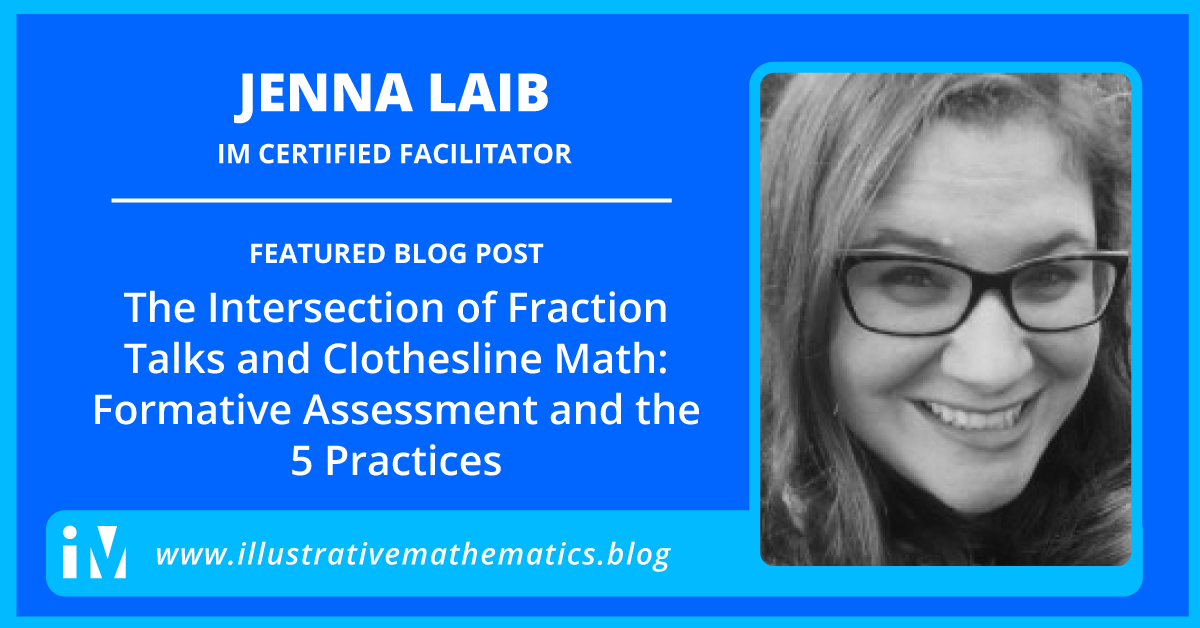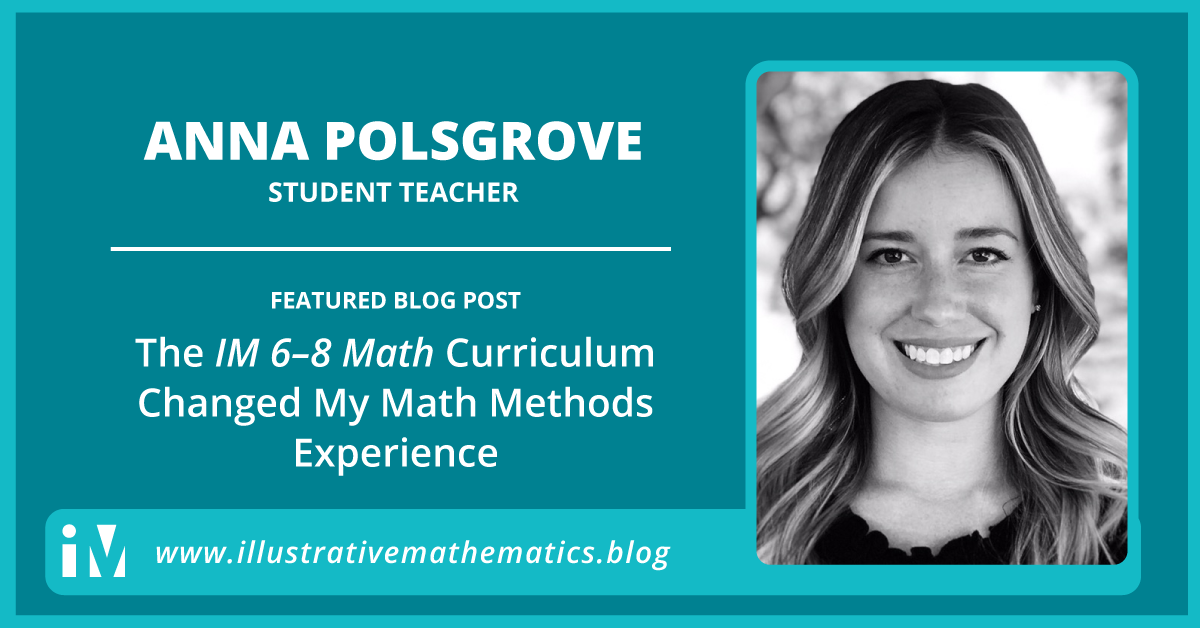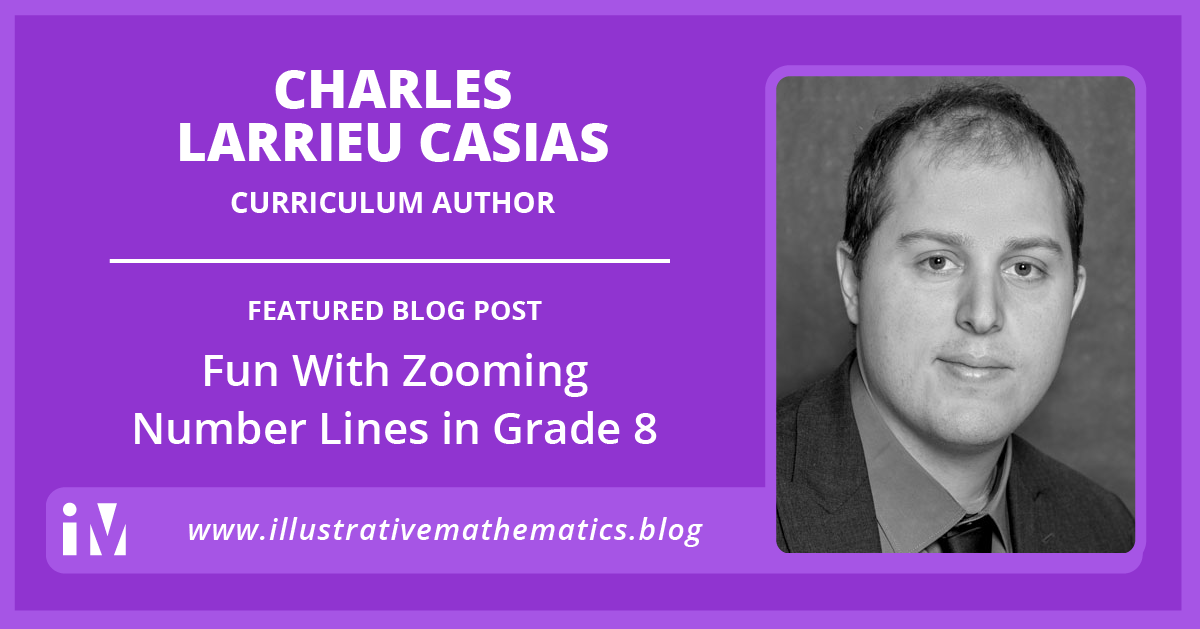IM Certified® Blog
Truth and Consequences Revisited
By William McCallum What are extraneous solutions? A while ago I wrote a blog post about solving equations where I talked about seeing the steps in solving equations as logical deductions. Thus the steps \begin{align*}3x +...
What is the Time? It Depends…
Q: What is the fastest way to get a heated debate going about some topic in the IM 6–-8 math curriculum? A: Show people this graph from Lesson 4 in Unit 8.5: By Kristin Umland Many of us learned that time is always the...
What is Multiplication?
Multiplication is vexation, Division is as bad; The Rule of Three doth puzzle me, And Practice drives me mad. (old nursery rhyme.) Some people might answer that multiplication is repeated addition. For example, $5 \times 7$...
The Power of Noticing and Wondering
My first years of teaching, I worried my students looked at me much like Ben Stein as the teacher in Ferris Bueller’s Day Off. I cringe to think about the series of monotonous and leading questions I strung together to a...
Catalyzing Change through the IM Algebra 1, Geometry, Algebra 2 Math
NCTM has called for structural and curricular changes in high school mathematics. Learn about how IM's high school curriculum is aligned with the vision put forth by NCTM to end tracking, implement effective targeted...
Proof in IM’s High School Geometry (A Sneak Preview)
Supporting high-school students to write detailed, precise proofs is challenging. Learn about some of the design elements that IM used to invite students to a deep exploration of proof. In IM’s high school Geometry...
Why is 3 – 5 = 3 + (-5)?
By William McCallum You will never have to subtract again. Students sometimes learn about addition and subtraction of integers using integer chips. These are circular chips, with a yellow chip representing +1 and a red chip...
Professional Learning Through a Fraction Task Progression
Teaching mathematics is a continuous cycle of identifying where each student is in their learning trajectory and determining meaningful ways in which to build on their current understandings. While we...
Engaging All Students in Meaningful Mathematics
“At the end of the day, this wasn’t about focusing on the objective, it was about making the objective meaningful to him.” The work of teaching is both invigorating and challenging. We want to instill a love of math and...
Parent Math Night Using Illustrative Mathematics
Open House night; cue anxiety and sweaty palms! Hope my students’ parents don’t mind. I just began my seventh year of teaching middle school mathematics. Middle school is a limbo land filled with prepubescent pre-teens,...
Planning for Meaningful Practice
There is no shortage of available math resources for teachers to use in their classrooms. The difficult and time-consuming job for teachers is weeding through all of the tools to decide which best supports students in...
Say What You Mean and Mean What You Say
By William McCallum In one of our professional development workshops, there is an activity in which the facilitator asks teachers to skip count by $\frac34$. The facilitator records the count, $\frac34$, $\frac64$,...
What Is Right About Wrong Answers?
When I first started teaching, at the end of each day, I would open my teacher’s guide, grab my pen, and thumb through the stack of completed worksheets. My eyes would dart quickly from the red answers in the teacher’s...
What I Learned Today: Scale Drawings & Maps
I asked my 15-year-old what she learned today at school. She paused for a moment and then answered, “What did you learn at school today?” It took me a while to think about what I had learned (which will make me more...
The IM Curriculum Changed How I Think About Math Instruction
Growing up we usually think we are either a math person or not a math person. But, in preparing for this year I saw a picture that said ‘How to be a math person: Step 1: Do math Step 2: Be a person’ and I really started to...
Planning to Use Pre-Unit Assessments
Time to start a new unit! What do you need to know before your students enter the room? NCTM’s Principles to Actions names several productive beliefs about assessments that will promote mathematical success for all. At the...
IM Preparing for the School Year
There are always so many things to do in preparation for a new school year. At this point of the summer, to-do lists start getting made, materials get purchased, rooms are organized, and math class planning begins....
Building a Mathematical Classroom Community
Classroom environments that foster a sense of community that allows students to express their mathematical ideas—together with norms that expect students to communicate their mathematical thinking to their peers and...
Fractions: Units and Equivalence
By William McCallum “I'm afraid I can't explain myself, sir. Because I am not myself, you see?” Alice in Wonderland. The idea of equivalence in mathematics is tricky for learners, because when we talk about two things being...
5th Grade: Decimal Place Value
By Kristin Gray There are some standards I think we do such a great job developing in early elementary, but never revisit explicitly when students learn about different numbers such as fractions and decimals. I blogged...
The Intersection of Fraction Talks and Clothesline Math: Formative Assessment and the 5 Practices
By Jenna Laib My sixth graders are weary of pre-assessments. No matter how many times we discuss the goal of a pre-assessment–for me to learn more about their current strategies and understandings, so that I can design...
The IM 6–8 Math Curriculum Changed My Math Methods Experience
By Anna Polsgrove When I first started the Math Methods course at University of California, Irvine, all of my ideas on how to learn math took a complete 180. During the first two months, a million questions swirled in my...
Fun With Zooming Number Lines in Grade 8
By Charles Larrieu Casias The number line is an anchor representation that threads through the entire middle school curriculum. For this blog post, I want to focus on a creative use of the number line in grade 8 to explore...
Untangling fractions, ratios, and quotients
By William McCallum In everyday language, $\frac{a}{b}$, $a\div b$, and $a : b$ are all different manifestations of a single fused notion. Here, for example are the mathematical definitions of fraction, quotient, and ratio...



